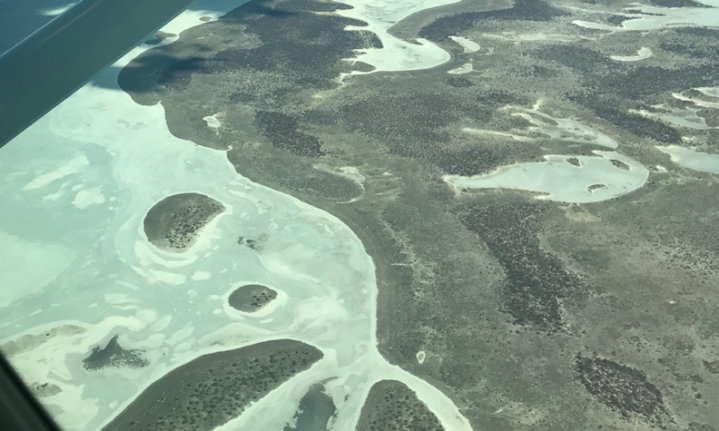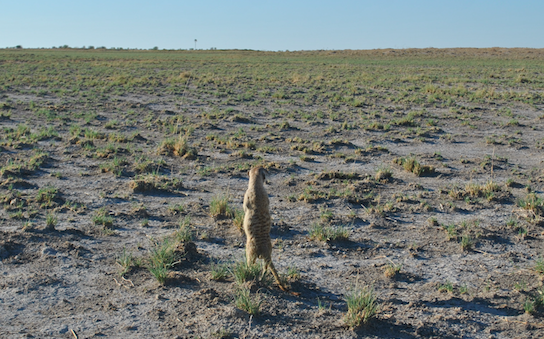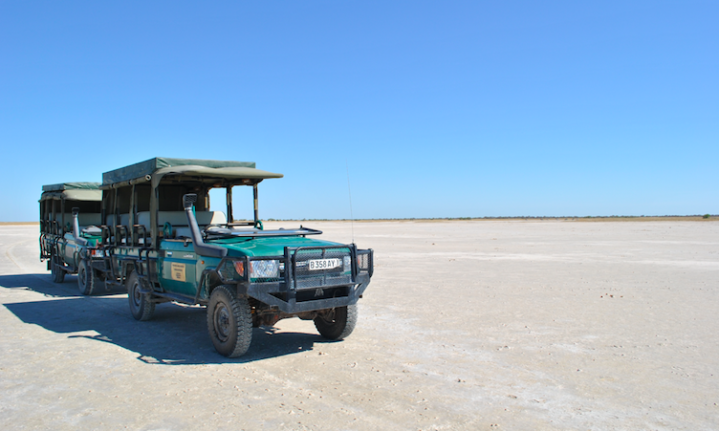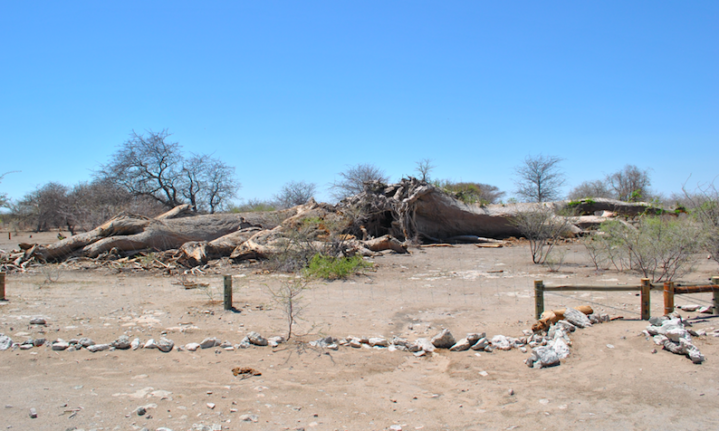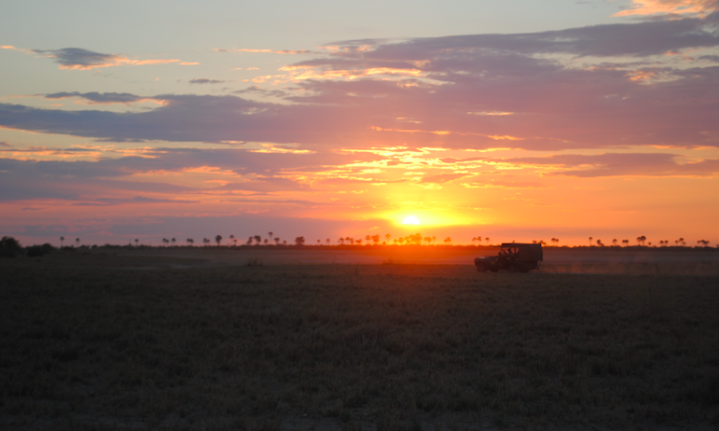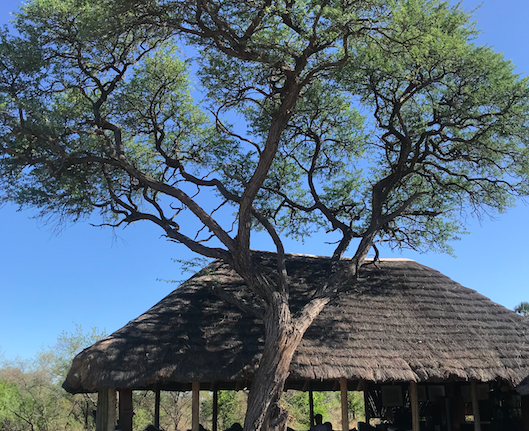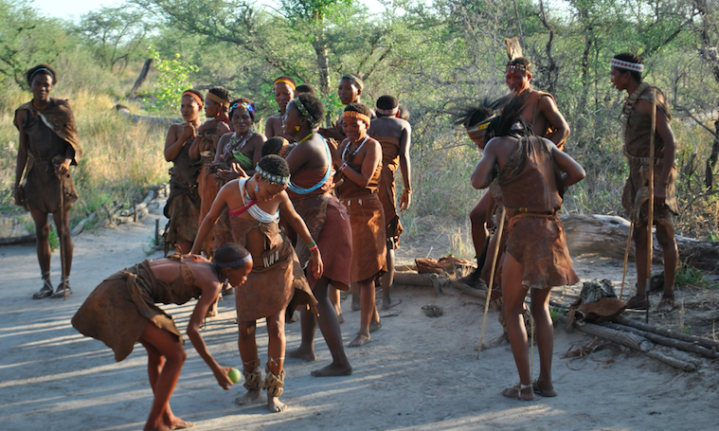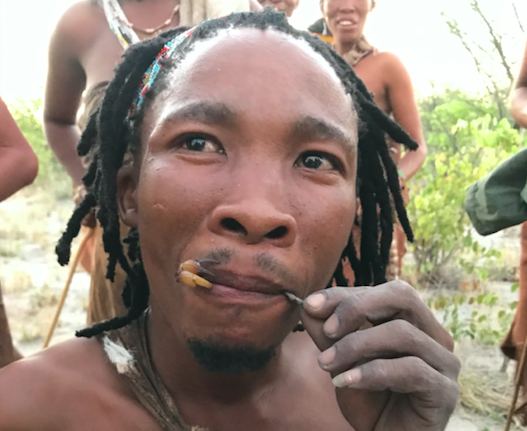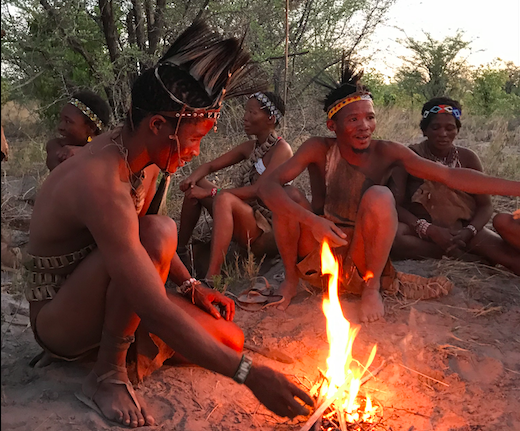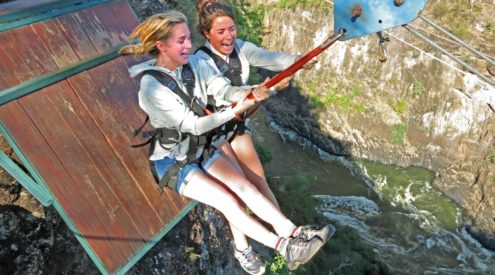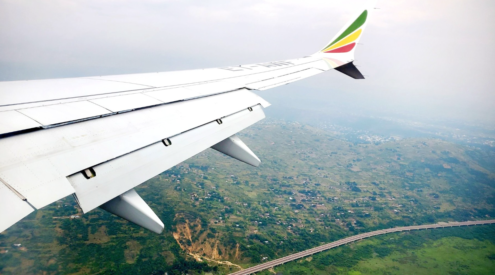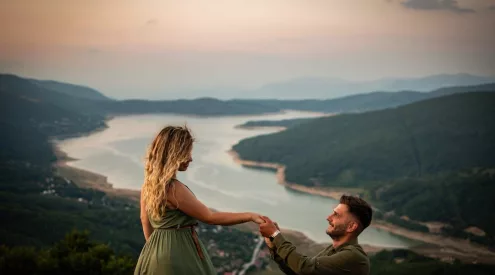When flying from Maun International Airport to the Kalahari, the largest continuous expanse of sand on Earth, the vastness of the pans and the harsh dryness of the desert from above are inexplicably beautiful. Positioned near the edge of the Makgadikgadi salt pans in Botswana lies a piece of paradise: Natural Selection’s Camp Kalahari.
When we landed, our group of travellers were simultaneously greeted by two guides and a thunderstorm.
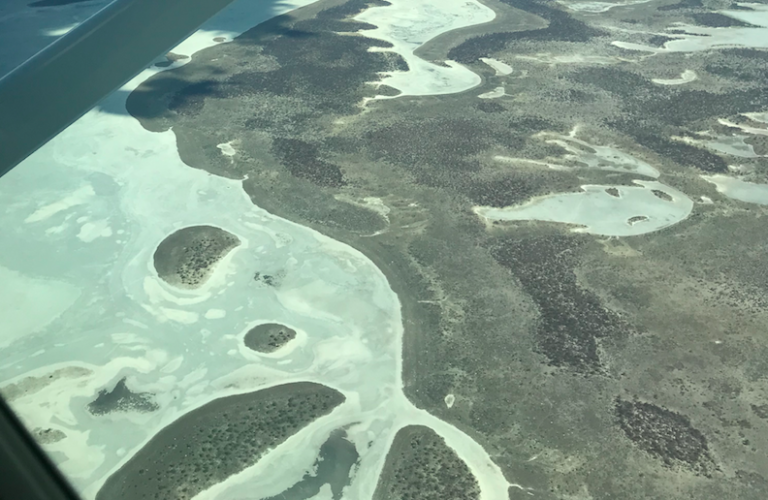
The salt pans from above. Image: Imogen Searra
In the Kalahari, late November thundershowers can be expected as this is Botswana’s wet season, so we hurried to find shelter. Sopping and excited, we reached Camp Kalahari from the airstrip within the hour. Greeted by the warm and welcoming faces of the Camp Kalahari team, the sun began to shine.
After checking in under the thatched roof of the recreational area and being briefed on the surrounds, glasses of thirst-quenching, homemade lemonade was poured and glugged down instantaneously. A much-welcomed refreshment in the 40°C heat.
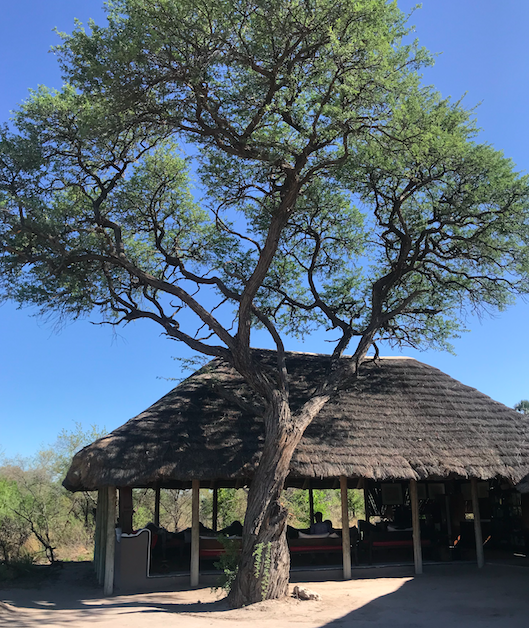
The entrance and recreational area of Camp Kalahari. Image: Imogen Searra
Camp Kalahari is located nearest to the Nwetwe pan in the Makgadikgadi basin. This area is laden with palm trees: an indication of water and therefore, life. It is also near the final destination for the zebra migration, Africa’s second-largest animal migration. When rains begin to fall in the Nxai Pan area, Botswana’s zebras move off from Chobe and head south for the nutrient-rich grass of the Makgadikgadi.
We were soon back on the game vehicles to enjoy the sunset overlooking the Great Nothing, another name for the salt pans. We spent the evening debating politics, discussing the geography and history of Botswana and marvelling at the billions of stars overhead.
Also read: Botswana: Khwai to Makgadikgadi Pan in a Ford Everest
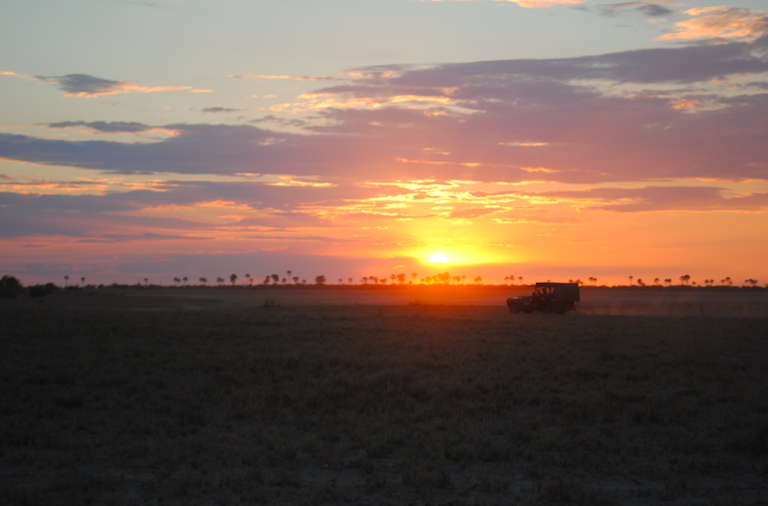
Palm trees line the horizon of the salt pans. Image: Imogen Searra
Situated in the heart of the Kalahari, the camp is one of three in a 1-million acre private reserve. With only 12 Meru-styled tents, relaxing and unwinding was an inevitable part of my stay. The camp is completely fenced to keep out all animals, allowing for children of all ages to accompany their parents on holiday. The tent I stayed in could sleep two people and was fitted with an en-suite bathroom and outside deck. The interior of the tents is modern and chic with an ode to the safari of yesteryear.
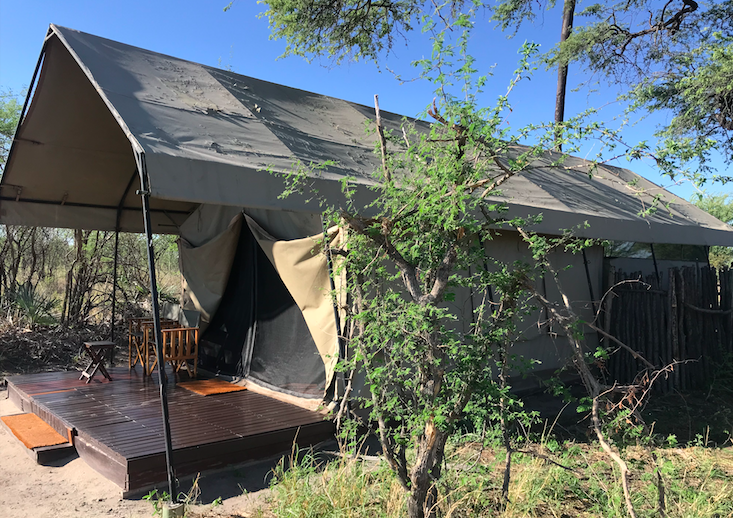
Camp Kalahari Tents can sleep 2 guests. There are however family tents available that can accommodate up to 5 guests. Image: Imogen Searra
In the morning, I was bursting with excitement for the day’s adventure: an interactive experience the ‘Kalahari cool cats’- a habituated family of meerkats, to see the Makgadikgadi salt pans, and the fallen Chapman’s Baobab all before midday. These excursions are some of the activities offered by Camp Kalahari.
We spent the first two hours after sunrise walking with the meerkat family, observing their behaviour and feeding habits. These animals grow to between 25-35 cm and males and female adults weigh 730 g and 720 g respectively.
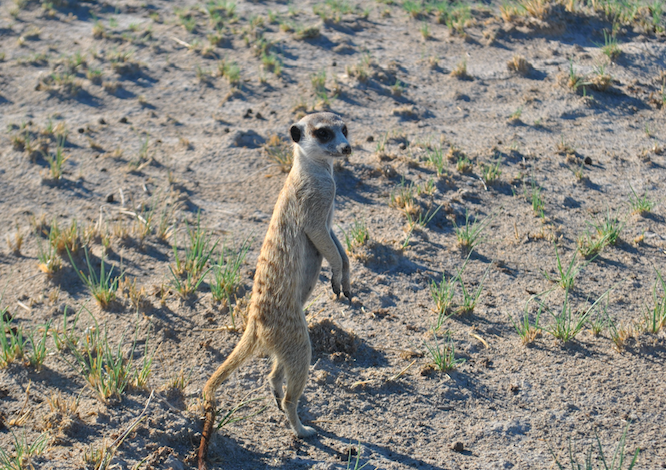
Meerkats walk on all fours and stand on their hind legs in search of predators and prey, or to soak up some early morning sunshine. Image: Imogen Searra
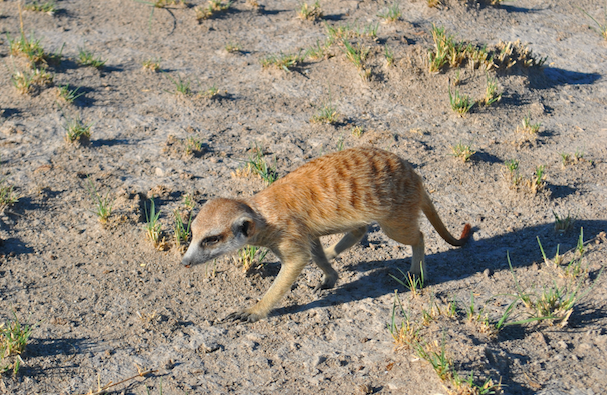
Meerkats can eat up to a kilo of food in a day. Image: Imogen Searra
After a quick cup of coffee watching over these incredibly interesting creatures, we moved on to the mesmerising salt pans. It is quite something to be seated in the middle of a salt pan with the horizon glaring back at you. The pans are the ultimate place for optical-illusion photography. The white-grey salt combined with the surrounding white sand can play tricks on the untrained eye. Animals on the outskirts of the pans look like shapeless figures.
Botswana is a very flat country and so the guides decided to test my navigation skills. A blue bag was placed 100 metres in a straight line from the game vehicle and the task was to walk toward the bag, blindfolded. I was up for the challenge and began walking. After a few minutes ‘stop’ was shouted in my direction and I removed the blindfold. I was so far to the right of the blue bag that I almost walked in the complete opposite direction.
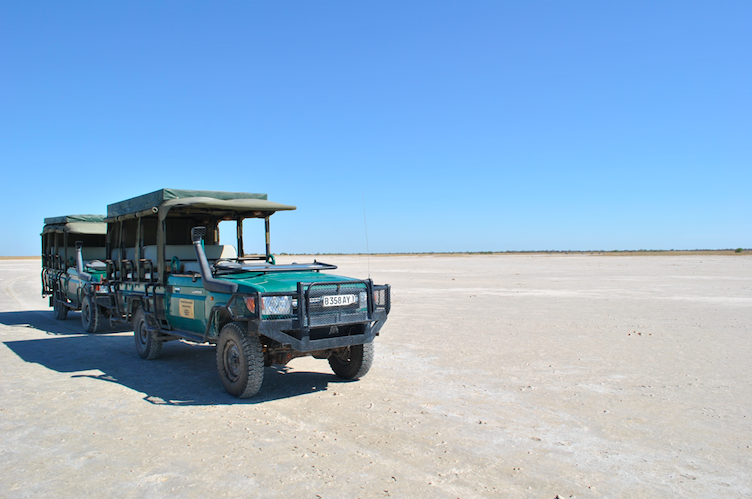
In the middle of the salt pan. Image: Imogen Searra
If the pans are dry and white in colour, they are safe to cross. Elephants migrate across the salt pans and if their tracks are deep, this means the pans are wet and chances are a vehicle’s tires will get stuck.
After the pans, we drove to see the mighty fallen Chapman’s baobab. I was fortunate enough to have Laps as my guide while staying at Camp Kalahari. His knowledge, understanding and respect for this unique part of the world was a privilege to experience. He informed me that the baobab was named after James Chapman, who explored the area in 1861 with a man named Thomas Baines. The baobab, located near the Gweta village, collapsed in 2016 when it split down the middle and fell to the ground.
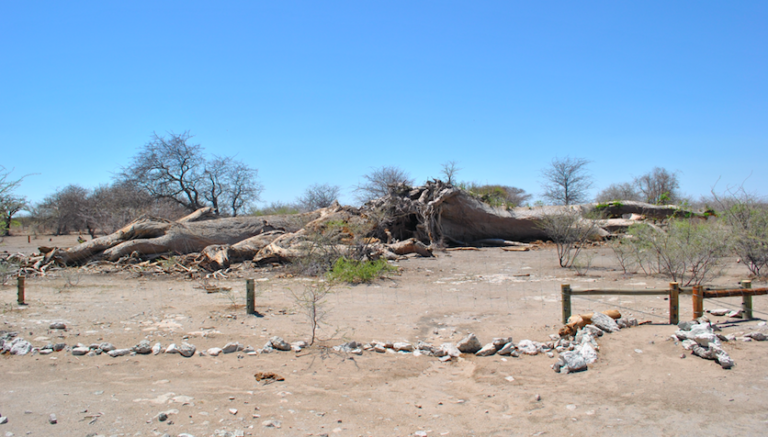
Chapman’s baobab is thought to be over 1,000 years old. Its circumference measured 25 metres, with 6 trunks. Image: Imogen Searra
When we returned to camp, a delectable lunch was served, followed by a siesta. Throughout my stay, at Camp Kalahari the food was exceptional. The vegetarian options were creative and flavourful, such as the pesto and string bean pasta. Breakfast was no exception either, with an array of fresh fruits, hot meals and cereals to satisfy the morning hunger pangs.
In the late afternoon we embarked on a bush walk with the Zu’/hoas tribe, decedents of the San people. This tribe are hunter-gatherers and they showed us how their people have survived off the land for centuries.
We set off into the late afternoon sun, digging for bulbs that are a vital source of water in times of drought, learning which leaves are poisonous and which have medicinal properties. We watched as a tribesman dug up a scorpion and placed it in his mouth. The tribe strongly believes in conserving and preserving the land and leaving an area how you found it. After each demonstration, they would return the plant, or scorpion back to how it was found.
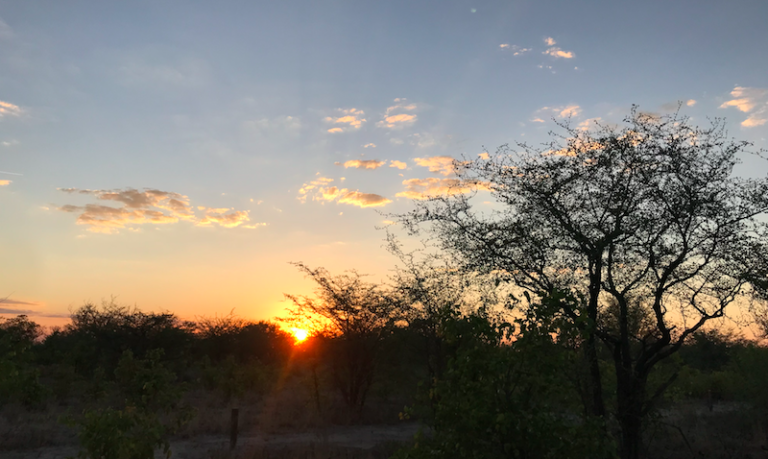
The sunsets in this desert oasis are second to none. If you are interested in star-gazing, this area produces clear night skies and billions of stars. Image: Imogen Searra
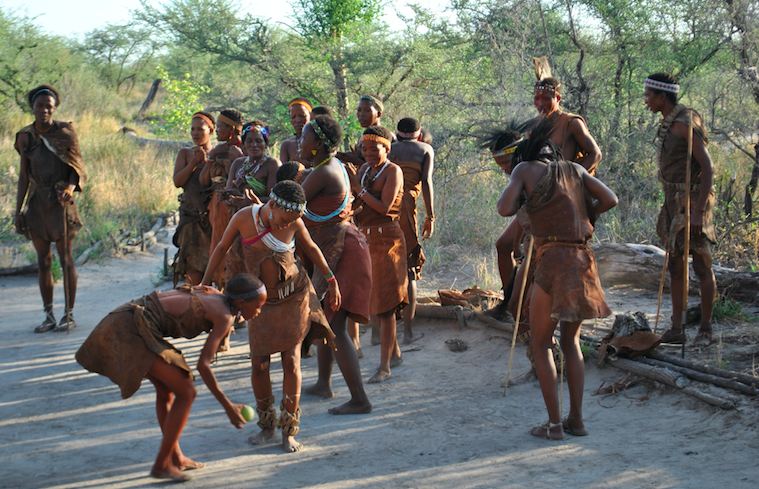
Members of the Zu’/hoas tribe engaging in a traditional game. Image: Imogen Searra
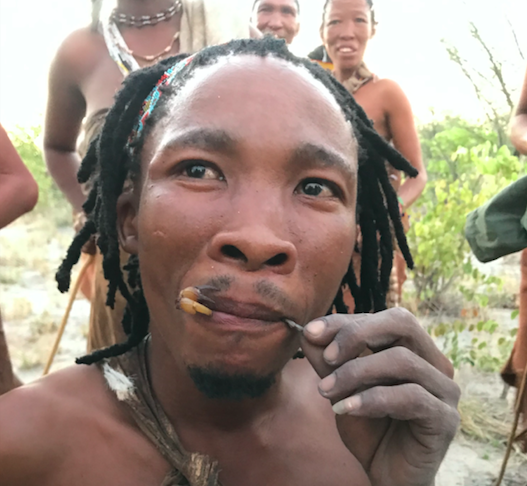
A scorpion caught in a compromising position. Image: Imogen Searra
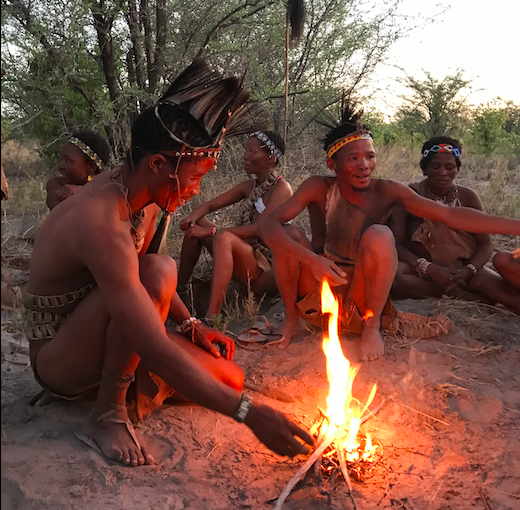
The tribesmen showed us how they start a fire using dry grass, a stick and a stone. Image: Imogen Searra
Throughout the walk we were told stories from the past and how these traditions are kept alive today. Before sunset, we returned to camp and got into the vehicles. We set off to spend dinner and the evening in the pans, while witnessing a traditional trance dance. It was a privilege to witness one of Africa’s last remaining ancient tribes in action. The tribe travelled from their home, the Xaixai village in the north-west of Botswana to allow us into their world for a few hours. The focus on heritage tourism at Camp Kalahari made the Kalahari an unforgettable experience.
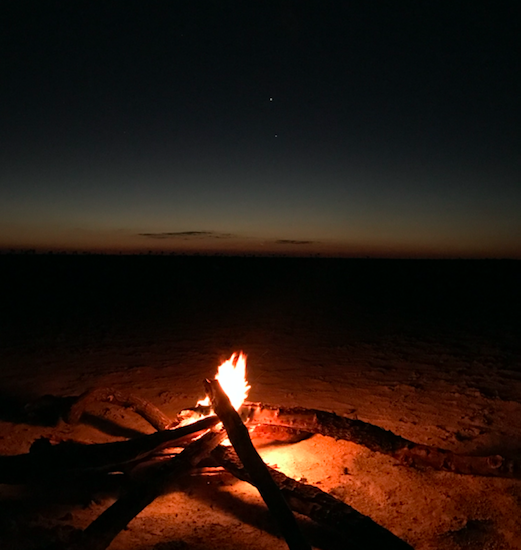
The salt pans by night. Image: Imogen Searra
Natural Selection’s Camp Kalahari showcases the beauty and diversity of Botswana’s terrain and wildlife. This area is easily accessible by plane or car and is a 1.5- 2 hour drive from Maun. While the Kalahari is a wildlife hotspot, this is not all that there is to experience. The human experiences and heritage tourism element of this unique place sets the Kalahari apart from other safari destinations. If you are looking to escape the hustle and bustle of everyday life, then a trip to Camp Kalahari to listen to the deafening silence of the Makgadikgadi salt pans should be at the top of your list. The staff are exceptional at their respective jobs and make you feel at home as soon as you arrive.
Whether you travel during the wet season (November – April) or the dry season (May – October) you are in for a treat at this Botswanan oasis.
Camp Kalahari has no WiFi, a perfect place to get off the grid for a few days. There is a pool to cool down in during the afternoons and a large, communal dining area. Accommodation fees include all meals, beverages, guest laundry, daily activities, expert guiding, park entry fees and VAT.
Cost: Prices start at R8,920 per person, per night for 2020.
Image: Imogen Searra











